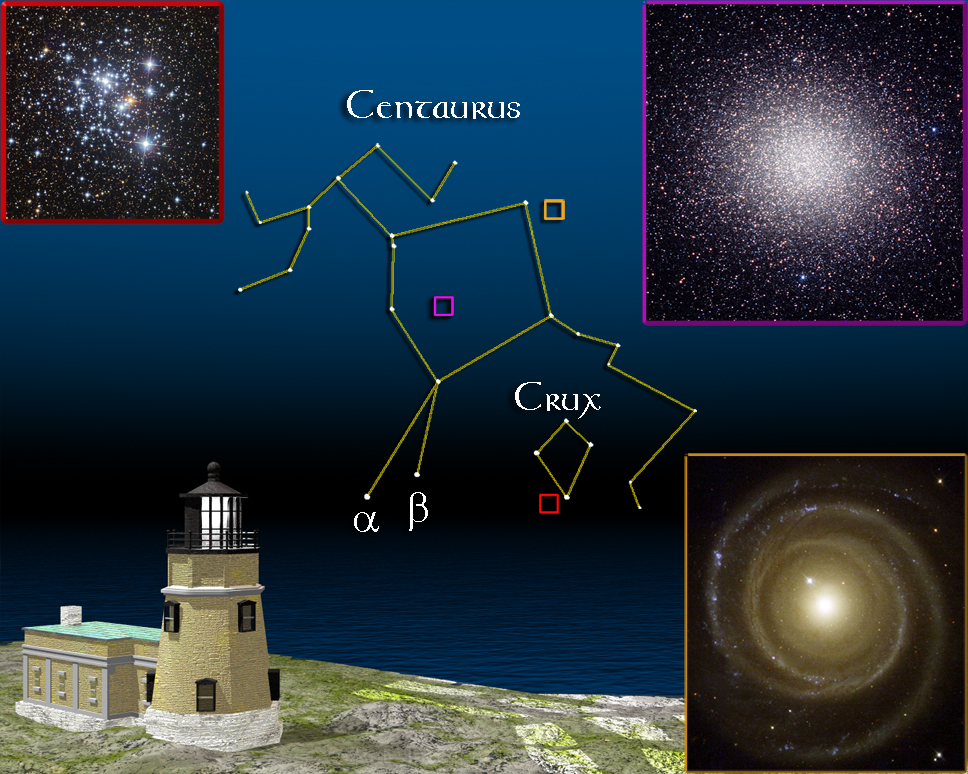
For the week including April 15, 2011

DOWN UNDER
About 5,000 years ago, an observer in our region who looked south could see two brilliant stars close to the horizon oriented toward a luminous diamond of stars. This beautiful arrangement, the stars Alpha and Beta Centauri pointing the way to Crux, the Southern Cross, is gone from our skies. Precession, a slow wobble of the Earth’s axis, which takes some 27,000 years to complete, has caused these stars to dip too far below the southern horizon for us to see them. Nowadays, Hawaii gets a better look at them than the rest of the USA. Still, if you live in Texas or Florida and have a good view of the south, you can find the Southern Cross if you’re willing to lose a little sleep. Around three o’clock in the morning, a quick look to the southern horizon will be enough to spot these wonderful stars.
The triple-star system Alpha (α) Centauri is the closest to our Sun, only four light years away. Because it’s so close, the otherwise average Alpha Centauri shines enough to be ranked third brightest in our night sky. Alpha Centauri was given the name “Rigel Kentaurus” on old star maps, Arabic for the “Leg of the Centaur”. Just to the right of it is Beta (β) Centauri, “Hadar”. Hadar is the eleventh brightest star in the sky and makes a brilliant pairing with Alpha Centauri. For centuries, navigators have instantly oriented themselves by these stars because nowhere else in the sky are two bright stars so close together.Crux is the smallest constellation, but its four main components rank among the skies brightest stars. Near its base is the Jewel Box, one of the most beautiful star clusters visible in small telescopes. Shown in the photograph by Dieter Willasch at upper left, it contains about fifty young stars of varying colors. If you’re planning a trip to the Deep South anytime soon, a pair of binoculars is all you’ll need to pick out some of the wonders “down under”.
Galaxy NGC 4622, shown in the Hubble Space Telescope photograph at lower right, has one of the most peculiar sets of spiral arms yet found. As a result of the collision and mutual absorption of two separate galaxies, the inner region of the galaxy spins clockwise while its outer arms rotate counter-clockwise.
Some five to ten million stars comprise the globular cluster known as Omega Centauri, the last star of the Centaur. Visible to the naked eye as a hazy patch of light, large as the full moon, this cluster is sometimes mistaken for a comet. Shown in the photograph by Loke Kun Tan at upper right, Omega Centauri is about 350 light years across and orbits around the outside of our galaxy once every hundred million years.
Unless otherwise indicated, all content of this web site is the copyright of Robert Deegan and all rights are reserved.
For more information, or to comment, please contact: Bob@NightSkies.org